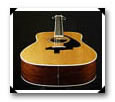Canon PowerShot G3The third generation of Canon's popular G model retains last year's 4 megapixel CCD, but brings a 4X zoom lens and a host of other improvements.<<Video, Power, Software :(Previous) | (Next): Reference: Datasheet>> Page 12:Test Results & ConclusionReview First Posted: 9/16/2002 |
Test Results
|
- Color: Canon's cameras generally deliver excellent color, and the
G3 is no exception: Colors in my tests were hue-accurate and appropriately
saturated, with excellent white balance under a wide variety of shooting conditions.
The G3's auto white balance setting had some difficulty with the always-difficult
household incandescent lighting of my "indoor portrait" test, but
its incandescent and manual options did a superlative job. The G3's color
also seems very "balanced" across the spectrum, with no overemphasis
on any particular color. Overall, really excellent color...
- Exposure: The G3 handled the lighting of my standard test shots very
well, requiring slightly less positive exposure compensation than average
on the "outdoor portrait" shot, and an average amount of compensation
for the "indoor portrait" test. (Both of these tests generally require
a fair bit of positive exposure compensation, due to the high overall subject
brightness.) I particularly appreciated the menu option that let me adjust
the camera's contrast, as this did a lot to help hold onto highlight detail
in the (deliberately) very contrasty outdoor portrait shot. Tonal range was
generally very good, with low image noise in shadows.
- Resolution/Sharpness: The G2 had a very sharp lens on it, and I'm
happy to report that the longer-zoom lens on the G3 is very good as well.
Images were always crisp and clean, showing lots of fine detail, without any
obvious artifacts from in-camera sharpness enhancement. The G3's images were
also sharp across the frame, although I did observe a little softening down
the extreme left-hand edge of the frame.
- Closeups: The G3 does an average to slightly better than average
job in the closeup arena, with a minimum capture area of 2.93 x 2.20 inches
(74 x 56 mm).
- Night Shots: With a maximum shutter time of 15 seconds and a noise-reduction
system that kicks in automatically for longer exposures, the G3 is a superb
low-light performer. A strong autofocus illuminator lets it focus on nearby
objects even under very dark conditions, and its white balance system does
an unusually good job of correcting for color casts even at very low lighting
levels. Image noise is also quite low, even at the G3's maximum setting of
400.
- Viewfinder Accuracy: The optical viewfinder was one of the few areas
where I found anything to complain about with the G3. While its 86% frame
coverage is very much on par with other prosumer digicams, I personally prefer
a more accurate representation of what I'm shooting. Fortunately, the LCD
display shows almost exactly 100% of the frame when it's used as a viewfinder.
- Optical Distortion: Optical distortion on the G3 was slightly better
than average at the wide angle end of the lens' zoom range, and about average
at the telephoto end. (0.7 and 0.3 percent, respectively) Chromatic aberration
is very low, showing only about two or three pixels of very faint coloration
on either side of the target lines. (This distortion is visible as a very
slight colored fringe around the objects at the edges of the field of view
on the resolution target.) The most obvious distortion I noticed was some
corner softness, particularly along the left side of the frame.
- Battery Life: Like other Canon cameras using their burly BP-511 battery
pack, the PowerShot G3 shows really excellent battery life. I still strongly
advise purchasing a second battery along with the camera, just on general
principles, but with judicious usage of the G3's LCD screen, you should be
able to get in a full day's shooting on a single charge.
Conclusion
Last year's G2 was already one of my favorite digicams, a feeling apparently shared by a sizable chunk of the digicam market, judging by the traffic its review drew from our readers, not to mention the strong sales it enjoyed at retail. The most noticeable enhancement to the G3 over the G2 is the 4x zoom lens, but myriad other minor tweaks and enhancements make for a significantly upgraded shooting experience. Many in the enthusiast community will doubtless question Canon's decision to stay with the 4 megapixel sensor, but every indication is that the combination of sensor and lens in the G3 very much hold their own with its 5 megapixel competitors. My tests of a production model of the G3 confirmed all my earlier conclusions about image quality: The G3 takes great pictures, with excellent color and tone. I don't know that many G2 owners will feel compelled to upgrade to the G3, but it certainly looks like a strong entry into the high end "prosumer" digicam marketplace.
Reader Comments! --> Visit our discussion forum for the Canon PowerShot G3!


Follow Imaging Resource: